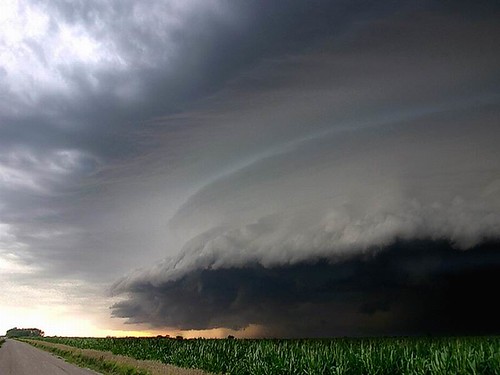This is an old subject (about 6 weeks old now), but it is important enough to me to revisit, because, well it’s my blog dammit, and I’ll do what I want (plus I'm woefully lacking on content at present)… that and I think public trust is an imperative part of journalism. Besides if I keep rubbing people the wrong way I might get completely deleted and I’d like to have this down somewhere.
Is it ok to lie if/when it’s for someone’s own good? There’s no right or wrong answer to this question by the way, but in my opinion in this particular instance:
 |
| From There goes the neighborhood |
My answer is no.
Does this photo look familiar?
You’ve probably seen this picture or rather this original version in your inbox.
You’ve probably seen this picture or rather this original version in your inbox.
What we have here is a fake of a fake… I’m not exactly sure the double negative rule applies. Urban legends and the proliferation of bad information via e-mail are a personal pet peeve of mine, imagine my distain for the editors that allowed this into the paper (on the front page no less). Not only did they pass off an already well-known fake hurricane Katrina picture, they doctored it up with people (pointing at the coming onslaught, which was a nice touch) and a beach to reflect this type of event occurring locally. Clearly this melodramatic picture was designed to incite emotionalism at the cost of the truth. Where's the public good in that? Beats me.
So what’s the big deal? It was captioned as a photo illustration.
I’m not looking to pick fights but the University of Wisconsin–Madison reveals why people like me get upset when journalists take liberties such as the above. Below is an excerpt of the link given.
Photo illustrations
Photo illustrations differ from news photos in content, creation, and purpose. They are staged or produced, and are manufactured situations. They often are set up in a studio and are used for fashion, food, and product promotion. When an existing photograph is altered for artistic purposes, such as by adding or deleting content, it also is considered a photo illustration. Environmental portraits shot on location are not considered photo illustrations.
Use caution when creating a digital illustration on a computer that uses a photo as its base material. The final image should not be so photorealistic that a reader could perceive it as being real.
When publishing a photo illustration, it should be made clear to readers that the image does not represent a real situation. In all cases, photo illustrations should be labeled as such. Any permitted alteration changing the original content of an image must be labeled as a “photo illustration.” The credit line should read: “Photo illustration; original photo by XXX.” Artistic use of images, as in a collage, is permitted.
Remember, however, that no amount of captioning can balance a visual lie. Carefully consider any consequences, including jeopardizing credibility with readers, before creating a photo illustration.
***
The underlying gist of a situation like this is that journalistic credibility can be damaged. If you have to ask, then it probably isn’t safe to go there. Meanwhile, take everything you read (and see) in the local papers with a grain of salt, which isn’t at all the way it should be.




No comments:
Post a Comment